Hey there, fellow freedom seeker!
If you’re reading this, chances are you’ve been bitten by the online business bug. Maybe you’re dreaming of swapping that soul-crushing 9-to-5 for a laptop lifestyle, working from a café in Chiang Mai, a beach in the Philippines (my current stomping ground!), or just your own living room without a boss breathing down your neck. Affiliate marketing looks like the golden ticket, right? Promote products you like, earn commissions, live the dream. Simple!
Well, yes and no. Affiliate marketing is a fantastic opportunity – one that’s allowed me to live abroad for over two decades. However, let’s be honest, the path isn’t always paved with gold. Instead, it’s more like… a labyrinth. A jungle. A minefield, even! Consequently, many beginners jump in with high hopes, only to stumble and get lost because they make some really common affiliate marketing mistakes.
I’ve been there. In fact, I’ve made some of these mistakes myself over my 21 years living outside of Germany, trying everything from freelancing to drop-shipping before circling back to affiliate marketing. It’s easy to get overwhelmed, waste time on the wrong things, and feel like you’re just spinning your wheels, especially when you’re short on time, knowledge, or dealing with inconsistent income.
But here’s the good news: these pitfalls are common, which means they’re also predictable and, most importantly, avoidable.
In this straight-talk guide, we’re going to walk through the most frequent affiliate marketing mistakes beginners make. We’ll look at why they happen, the pain they cause, and exactly how you can steer clear of them. By the end, you’ll have a clearer roadmap to build a sustainable online side hustle that actually moves you towards that financial independence you’re craving.
Ready to quit scrolling and start building smart? Let’s dive in.
Section 1: Setting Sail on the Wrong Course – Foundational Affiliate Marketing Mistakes
Starting your affiliate marketing journey feels like setting off on a grand adventure. You’ve got your compass (your laptop), maybe a map (a course or guide), and a destination in mind (financial freedom!). But if you don’t plot your initial course carefully, you might find yourself drifting aimlessly or hitting rocks before you even get out of the harbor. The foundational decisions you make right at the start are absolutely critical. Getting these wrong is one of the most common affiliate marketing mistakes beginners make.
Poor Niche Selection: Are You Building on Sand?
This is arguably the most fundamental mistake. Think of your niche as the ground you’re building your entire business on. If the ground is shaky, the whole structure is unstable.
Many beginners, seeing the massive popularity of topics like “fitness,” “finance,” or “travel,” think, “Great! Huge audience, must be easy to find customers!” Consequently, they decide to be a “fitness affiliate.” Sounds logical, right?
The Problem with Broad Niches
Working in a niche that is simply too broad is a significant issue. The fitness space, for example, isn’t just popular; it’s saturated. It’s packed with massive websites, huge influencers, and affiliates who have been doing this for years. Trying to enter that space as a complete newbie is like trying to be heard in a stadium full of screaming fans. You become a tiny, unnoticed voice in a vast ocean of noise.
Why Low Buying Intent Niches Don’t Pay
Another mistake involves choosing niches based purely on personal interest or perceived traffic, without checking if people in that niche actually buy things. Niches like “celebrity gossip,” “free game cheats,” or “software cracks” might get traffic, but the audience isn’t there to open their wallets. Instead, they’re looking for free stuff. Promoting products here is like trying to sell umbrellas in the Sahara.
Ignoring Passion and Expertise
Going the opposite way and picking a niche only because it seems profitable, even if you have zero interest or experience in it, is also a pitfall. Trust me, trying to write passionately about something you find mind-numbingly boring is a recipe for burnout. Your content will feel fake, and your audience will sense it. It’s tough enough managing time and energy when starting a side hustle; don’t make it harder by forcing yourself into a topic you hate.
The Impact of Poor Niche Choice
Ultimately, poor niche selection leads to intense competition, making it nearly impossible to rank in search engines or get noticed on social media. Furthermore, low buying intent means even if you get traffic, it won’t convert into sales. A lack of passion, moreover, leads to inconsistent effort and inauthentic content, which further damages your ability to build trust and make sales.
How to Avoid It:
- Go Niche, Get Specific: Instead of “fitness,” think “fitness for seniors with arthritis.” In place of “finance,” consider “budgeting for expats.” This drastically reduces competition and allows you to create content that deeply resonates with a specific group of people. It’s far better to be a big fish in a small pond than a tiny plankton in the ocean. (This point is directly from the research, and it’s gold!). You can learn more about finding the right niche in guides like this one from Location Rebel.
- Check for Buying Intent: Do your research! Are there products or services already being sold in this niche? Are competitors successfully monetizing? Look for signs that people are actively looking for solutions they’re willing to pay for.
- Balance Passion, Expertise, and Profitability: Strive for that sweet spot where your genuine interest and existing knowledge (or willingness to gain expertise) overlap with a market that has commercial potential. Your passion will fuel consistent content creation, and your expertise will build credibility. As Brandafy notes, balancing these factors is key.
- Do Your Homework: Thorough market research isn’t optional. It’s essential to confirm that your chosen niche is viable before you invest significant time and effort.

Unrealistic Expectations & the “Get Rich Quick” Mirage
Ah, the siren song of “passive income” and “quit your job in 90 days!” We’ve all seen the ads, right? They paint a picture of instant wealth with minimal effort. It’s incredibly tempting, especially when you’re juggling a demanding job and dreaming of financial independence.
The Mistake: Approaching affiliate marketing with a “get rich quick” mentality. Many beginners are lured by exaggerated claims and expect substantial earnings almost immediately without realizing the work involved. Refersion highlights this as a top mistake for newbies.
The Problem with Instant Gratification
This mindset is a fast track to disappointment and frustration. When the money doesn’t roll in after a few weeks (or months!), beginners often get discouraged and abandon their efforts prematurely. This ties directly into the pain point of inconsistent income – if you expect it to be instantly consistent, and it’s not, it’s demoralizing. Affiliate marketing is a legitimate business model, but like any real business, it demands time, dedication, and consistent work.
Underestimating the Time Commitment
Another mistake is a lack of patience and underestimating the time investment. Building an audience, creating quality content, establishing trust, and figuring out what works… this all takes time. Consequently, beginners often lose patience when success isn’t immediate. My own journey has had plenty of detours and periods where things didn’t move as fast as I hoped – adaptability was key! HostAdvice also points out underestimating the time needed as a common error.
Monetizing Too Soon
A big one is monetizing too early. Driven by the desire for income (that inconsistent income fear!), beginners often plaster affiliate links everywhere before they’ve actually provided value or built any trust with their audience.
The Impact of Rushing Things
Promoting products to an audience that doesn’t know, like, or trust you yet results in crickets. Low engagement, zero sales. Worse still, it makes you look like you only care about the commission, not helping people, which damages trust right from the start. Think about it – would you buy a recommended product from someone you just met who immediately started pitching you stuff? Probably not.
How to Avoid It:
- Adopt a Business Mindset: Treat affiliate marketing like a serious venture. It requires strategic planning, persistent effort, and continuous learning – just like starting any business, whether it’s a cafe or a consulting firm.
- Set Realistic Goals: Understand that significant earnings build gradually. Your first goal might be your first commission, then your first $100, then your first $1000/month. Set achievable milestones and celebrate small wins. You can dive deeper into setting realistic income goals in my other article.
- Cultivate Patience: Building relationships and trust takes time. Focus on consistent action and learning from every step, rather than fixating on immediate income. It’s a marathon, not a sprint! As ThirstyAffiliates mentions, patience is key.
- Prioritize Value First: Focus relentlessly on creating high-value content that helps your audience. Solve their problems, answer their questions, entertain them. Build credibility and trust before you heavily promote products. Monetization is a result of providing value and building trust, not the starting point.

Section 2: Picking Your Partners – Mistakes in Product and Program Selection
Alright, you’ve chosen your niche and you’ve got your head screwed on straight about the effort required. What’s next? Deciding what products to promote and which affiliate programs to join. Sounds simple, but this is another area where beginners make costly affiliate marketing mistakes.
Promoting the Wrong Products: Losing Trust & Making Zero Sales
This is where relevance and trust come into play big time. You’ve built a platform around a specific topic and attracted an audience interested in that topic. Now, you need to recommend things they’ll actually find useful.
The Mistake: Promoting products that have absolutely nothing to do with your audience’s needs or your niche. If your blog is about helping expats find housing, promoting dog grooming supplies (unless it’s “dog grooming for expats living in tiny apartments”!) is just going to confuse people and make them question why they’re following you. The research document gives a great example: promoting gardening tools on a tech review site makes no sense.
The Temptation of High Commissions
Another mistake is letting dollar signs cloud your judgment. Beginners are often tempted by products with sky-high commission rates, even if the product is low-quality or not the best fit for their audience. Promoting an expensive ($1000+) product might seem like a quick win, but the research points out these often have smaller customer bases and tougher conversions anyway.
The Impact of Irrelevant or Bad Products
Promoting irrelevant or bad products is the fastest way to destroy the trust you’re working so hard to build. If you recommend something that doesn’t help your audience, or worse, is a rip-off, they won’t trust your recommendations in the future. Your credibility goes down the drain, and so do your conversion rates. As the research emphasizes, trust is fundamental; without it, even the best products won’t convert through your links.
Promoting Without Product Knowledge
A common one is promoting products without actually knowing much about them. You haven’t used it, you haven’t researched it properly, but hey, it has an affiliate program! WP Manage Ninja lists lack of product knowledge as a key mistake.
The Consequence of Limited Knowledge
The impact here is significant: your content about the product will be superficial and unconvincing. You won’t be able to answer audience questions intelligently. This lack of deep product knowledge screams “I’m just here for the commission!” and again, kills trust and conversions. Search engines also prefer content that shows genuine expertise.
How to Avoid It:
- Relevance is King: Only promote products that are highly relevant to your niche and directly solve a problem or meet a need for your audience. Stay focused.
- Quality Over Commissions: Prioritize recommending high-quality products that you genuinely believe in. Ideally, use the product yourself or do thorough research. Ask yourself: “Would I recommend this to a friend or family member?” (This exact question is in the research, highlighting its importance!). Be honest about any limitations the product has. Build your strategy on trust.
- Become a Product Expert: Take the time to deeply understand the products you promote. Know their features, benefits, and potential drawbacks. This allows you to create compelling, informative content that builds credibility and helps your audience make informed decisions. Stay updated on product changes or industry trends.

Choosing the Wrong Affiliate Programs: Bad Business Partners
So you’ve found a great, relevant product. Fantastic! Now, you need to join the right program to promote it. This is where partnering wisely comes in.
The Mistake: Not researching the company offering the affiliate program. Is it a reputable business? Do they have a history of treating customers well? Are they actually relevant to your audience beyond just having a product you like? Geek For SEO lists not researching the company as a common blunder.
Ignoring Program Quality and Terms
Another mistake involves ignoring the quality of the affiliate program itself. Not all programs are created equal. Some have ridiculously low commission rates, tracking systems that break (meaning you don’t get credit for sales you did make – a real pain point for inconsistent income!), terrible affiliate support, or payment terms that are unclear or unfavorable. Affiversemedia calls ignoring program quality a mistake to avoid.
The Impact of Poor Program Choice
Partnering with a bad company or a poorly run program can waste your time, lead to lost commissions due to tracking errors, and even damage your own reputation if the merchant provides a bad experience to the customers you send them. Unclear terms can lead to unexpected issues or getting kicked out of the program.
How to Avoid It:
- Do Your Due Diligence: Before joining, investigate the company. Check their website, look for customer reviews (not just affiliate reviews), and understand their market standing. Are they a legitimate, well-regarded business?
- Vet the Program: Carefully research and compare affiliate programs for the products you want to promote. Look for competitive commission structures (mention recurring commissions if applicable – they’re great for building sustainable income!), reliable tracking (this is HUGE), clear payment terms (when and how do you get paid?), and responsive affiliate support. Prioritize quality partnerships over just chasing the highest commission percentage if the program itself is sketchy. Rewardful discusses avoiding pitfalls in program management.

[Image Placeholder: shifty_business_handshake.jpg] [Caption: Always vet your affiliate partners carefully. Not everyone plays fair!] [Alt Text: Humorous illustration of two figures shaking hands, one looking shifty or having fingers crossed behind their back, representing choosing the wrong affiliate program.] [Image Generation Prompt: Aspect ratio 4:3. Humorous illustration. Two cartoon-like business figures in suits are shaking hands. One figure has a clearly shifty or untrustworthy expression and is subtly crossing their fingers behind their back. Simple office background.]
Section 3: Your Message & How You Share It – Content and Promotion Pitfalls
Okay, you’ve got your niche, your mindset is right, and you’ve picked great products and partners. Now comes the fun part: creating content and promoting those products! But even here, there are plenty of common affiliate marketing mistakes that can sink your efforts. This is where your time management and lack of knowledge pain points can really bite if you’re not strategic.
Deficient Content Strategy: Talking AT People, Not TO Them
Your content is your voice. It’s how you connect with your audience, share your expertise (or what you’ve learned!), and build trust. If your content misses the mark, nothing else matters.
The Mistake: Focusing your content only on selling. Beginner content often reads like a sales brochure – just listing features and telling people to buy. This completely misses the point of affiliate marketing, which is to help people by recommending solutions.
The Impact of Selling Over Helping
Content that’s just a sales pitch feels disingenuous and unhelpful. People see right through it. This leads to terrible engagement, visitors bouncing away quickly, and zero conversions. It completely fails to build the trust needed for affiliate recommendations to work. Remember, trust is the currency! If your audience doesn’t trust your recommendations, they won’t click your links.
Publishing Low-Quality or Thin Content
Another mistake is publishing low-quality or thin content. This isn’t about writing a novel, but creating content that lacks depth, research, or original insight. Maybe you just rehash what everyone else is saying, or your reviews are superficial. Perhaps you’re rushing due to time constraints (hello, time management pain point!). Intergrowth highlights thin content as a common mistake.
The Consequence of Thin Content
Thin content doesn’t establish you as an authority. It won’t rank well in search engines. Furthermore, it doesn’t engage readers. Ultimately, it leads to low conversions. Both Google and your readers value comprehensive, insightful content that actually provides value.
Neglecting Readability and User Experience
A big user experience killer is neglecting readability and user experience. This means using tiny fonts, writing massive blocks of text that are hard to scan, using overly complicated language, or having a website that’s slow to load or looks terrible on a phone. Mageplaza lists poor readability as a mistake.
The Impact on Your Audience
People won’t stick around to read content that’s a pain to consume. They’ll leave, and they probably won’t come back. This hurts your credibility and your potential to make sales.
How to Avoid It:
- Help, Don’t Just Sell: Shift your mindset entirely. Your primary goal is to help your audience solve their problems. Create content that is informative, helpful, entertaining, or inspiring. Frame products as solutions within this helpful context, focusing on the benefits for the user, not just a list of features. Make sure your platform is easy to use and doesn’t frustrate visitors with intrusive ads or pop-ups.
- Quality Over Quantity: Commit to creating high-quality, well-researched, and engaging content. Provide thorough reviews with honest pros and cons. Share original insights or personal experiences where relevant. Analyze what top-ranking content in your niche looks like for inspiration on depth and structure. It’s better to have one excellent article than ten mediocre ones.
- Make it Easy to Read: Prioritize readability! Use clear formatting with short paragraphs, bullet points, and headings (like this guide!). Choose an appropriate font size (at least 16pt is recommended). Use simple, straightforward language (aim for around a 7th-8th grade reading level). Ensure your website design is clean, navigation is intuitive, and pages load quickly on all devices (especially mobile!).

Ineffective or Spammy Promotion: Annoying Your Audience
So, you’ve got great content. Awesome! Now, how do you get your affiliate links in front of people without coming across like… well, a spammer? This is where many beginners make crucial affiliate marketing mistakes.
The Mistake: Promoting too many different products at once. You’ve joined ten programs and want to link to everything in every piece of content. The research points to promoting too many products as a common error.
Using Spammy Tactics
Another mistake is using spammy promotion tactics. This includes aggressively pushing your links in irrelevant places (like random Facebook groups or forum comments where it’s not allowed), “stuffing” your content with an excessive number of links, or using overly salesy, hypey language. OptinMonster lists spammy marketing practices that kill trust.
The Negative Impact of Spamming
Spamming is annoying. Period. It damages your reputation, can get you banned from platforms, and rarely leads to sustainable sales. Overloading content with links looks suspicious and detracts from the value you’re trying to provide. Kit provides examples of non-scammy ways to promote links.
Lack of Authenticity
A major trust killer is a lack of authenticity. This involves creating reviews for products you’ve never actually used or being dishonest about your experience. It also includes using misleading headlines or clickbait just to get clicks. Matt McWilliams discusses avoiding inauthenticity.
The Consequence of Dishonesty
Trust is built on honesty. If you’re caught being inauthentic (and audiences are smart, they often can tell!), you’ll lose credibility instantly. Once trust is broken, it’s incredibly hard to get back.
Weak or Missing Calls-to-Action (CTAs)
Finally, weak or missing Calls-to-Action (CTAs) are a common issue. You’ve written amazing content, but you don’t tell people what to do next. Bluehost mentions missing CTAs as a mistake.
The Impact of Poor CTAs
Even if someone is convinced by your content, if they don’t know where to click or what step to take, they won’t convert. You’ve done all the hard work, only to fall at the final hurdle.
How to Avoid It:
- Be Selective: Don’t promote everything under the sun. Focus on a curated list of high-quality, relevant products that genuinely serve your audience. Quality over quantity, always.
- Integrate Links Naturally: Your affiliate links should feel like helpful resources, not jarring advertisements. Integrate them naturally within your valuable content where they are relevant and provide a solution. Avoid “stuffing” – limit the number of links per piece of content so it feels natural (the research suggests limiting links per content piece).
- Focus on Helping, Not Hard-Selling: Use informative and helpful language, not aggressive sales speak. Your content should guide, not push.
- Be Authentic and Truthful: Only promote products you genuinely stand behind. Share your real experiences, including both the pros and cons. Avoid misleading claims or clickbait. Authenticity is key to building long-term trust.
- Use Clear CTAs: Tell your readers exactly what you want them to do next. Use clear, concise, and action-oriented phrases like “Learn More Here,” “Get Started Today,” “Check the Price,” or “Download Now.” Make your CTAs visually distinct (like using buttons) and place them strategically within your content, especially after you’ve highlighted a benefit or solution.

[Image Placeholder: spammy_flyer_pushing.jpg] [Caption: Don’t be this guy with your affiliate links. Integrate them naturally where they’re helpful!] [Alt Text: Humorous illustration of a person aggressively trying to hand flyers to annoyed people on a street, representing spammy affiliate link promotion.] [Image Generation Prompt: Aspect ratio 4:3. Humorous illustration. A person with a slightly desperate expression is aggressively shoving flyers (labeled “Buy Now!”) into the faces of several people walking by on a street. The people walking by look annoyed and are trying to avoid the person. Cartoon style.]
Section 4: The Engine Room – Operational and Technical Oversights
You’ve got the strategy, the products, and the content. Great! But even behind the scenes, there are technical and operational affiliate marketing mistakes that can seriously slow you down or make you invisible. This is where the “lack of knowledge” pain point often comes into play, but don’t worry, it’s not rocket science!
Neglecting SEO: The Invisible Website
You can write the most amazing content in the world, but if search engines can’t find it, who will? Search Engine Optimization (SEO) is how you get free, consistent traffic from Google and other search engines. Ignoring it is a huge mistake. Ahrefs highlights SEO for affiliate marketing as crucial.
The Mistake: Failing to understand or implement basic SEO principles. Beginners often focus only on writing content without thinking about how people will actually discover it through search.
The Impact of Poor SEO
Your content remains largely invisible in search results. This drastically limits your audience reach and potential sales. You become overly dependent on paid ads (which stop the moment you stop paying, and can be expensive/complex for beginners) or fleeting social media traffic that disappears with algorithm changes.
Targeting Incorrect Keywords
Another mistake is targeting the wrong keywords. You might go after super broad, high-competition terms you have no hope of ranking for, or completely miss out on valuable “long-tail” keywords (more specific phrases people search for, often with higher buying intent). WP Manage Ninja lists targeting incorrect keywords as a mistake.
Poor Site Speed and Performance
One that hurts user experience too is poor site speed and performance. If your website takes ages to load because of a heavy theme or unoptimized images, people will leave before they even see your content. Google also penalizes slow sites.
How to Avoid It:
- Learn the Basics: Commit to learning and consistently applying fundamental SEO principles. This includes doing keyword research to understand what your audience is searching for, optimizing your on-page elements (titles, headings, content, images) with relevant keywords, and building links (both internal links within your site and quality external links pointing to your site). Ensure your site is technically sound and mobile-friendly. Tools like Yoast SEO (for WordPress) can help guide you.
- Target Smart Keywords: Focus your keyword research on finding relevant long-tail keywords. These are longer, more specific phrases that often have lower competition and clearer user intent (like “best noise cancelling headphones for expats working from cafes”). Tools like SEMrush, KWFinder, or Google Keyword Planner can be your friends here.
- Optimize Your Site Speed: Choose a lightweight, well-coded website theme. Optimize all your images for web before uploading them (compressing file size without losing too much quality). Use browser caching and consider a Content Delivery Network (CDN) as you grow. Regularly test your site speed using free online tools.
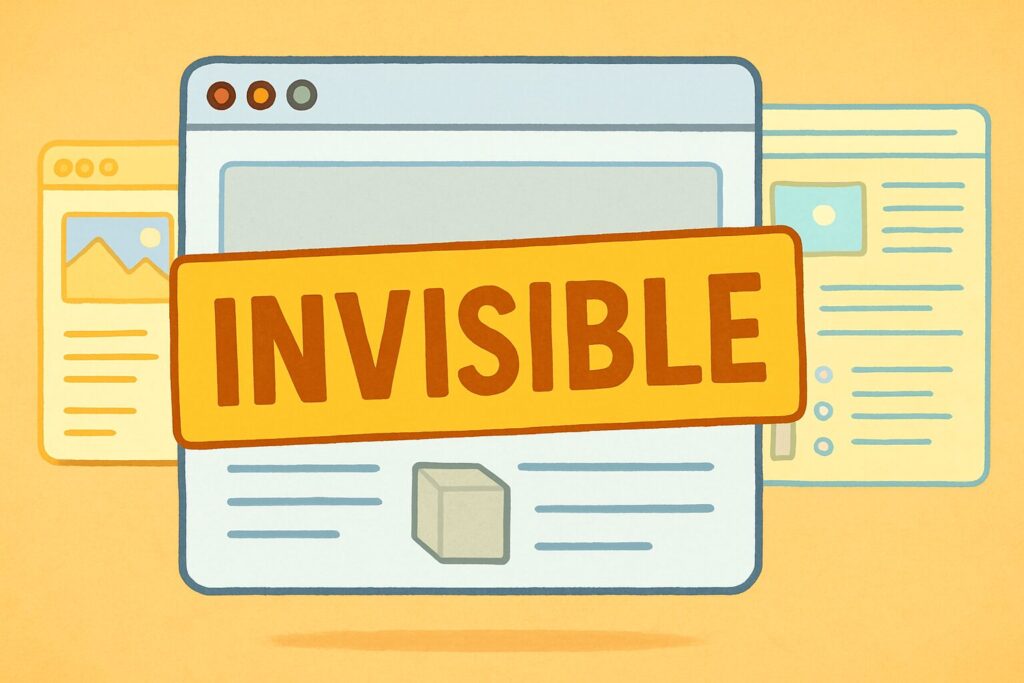
Flawed Traffic Strategy: Putting All Your Eggs in One Basket
Getting visitors (traffic) to your platform is essential. But relying on just one way to get those visitors is risky business.
The Mistake: Depending solely on a single traffic source. Maybe you only focus on SEO, or you only post on TikTok, or you only run paid ads. The research points to over-reliance on a single source as a vulnerability.
The Risk of Single Traffic Sources
If that one source changes its rules (hello, algorithm updates!) or disappears, your traffic can vanish overnight. Relying only on paid ads means your traffic stops the second you stop paying, and managing ads effectively without blowing your budget is a steep learning curve for beginners. This vulnerability is a big threat to consistent income. ClickBank discusses paid traffic sources but notes the complexity.
How to Avoid It:
- Diversify Your Traffic: Develop a multichannel approach. Combine organic strategies like SEO and social media with building a direct connection via email marketing. As you gain experience and income, you might strategically add paid advertising. The goal is to have multiple avenues bringing visitors to your site so you’re not reliant on just one. This is key to building an adaptable business.
Ignoring Tracking & Analytics: Flying Blind
Imagine trying to navigate a new city without a map or GPS. You’d just be wandering around, right? That’s what running an affiliate marketing business without tracking and analytics is like.
The Mistake: Not setting up tracking tools or, even worse, having the data but never looking at it. Beginners often find this too technical or less exciting than creating content. Getaawp emphasizes the importance of tracking performance.
The Impact of Not Tracking
Without tracking, you have no idea what’s working and what isn’t. You don’t know which articles are bringing traffic, which products people are clicking on, or where your sales are actually coming from. This means you can’t optimize your efforts, you waste time on strategies that aren’t working, and you miss opportunities to double down on what is working. It’s impossible to make informed decisions.
How to Avoid It:
- Set Up Tracking From Day One: Implement tracking tools like Google Analytics on your website. Get familiar with the dashboards provided by your affiliate programs and networks.
- Track Key Metrics: Monitor things like website traffic sources, which pages people visit, clicks on your affiliate links, and conversions. Look at metrics like Earnings Per Click (EPC) if your network provides it.
- Analyze Your Data: Regularly review your analytics. What content is performing best? Where is your traffic coming from? Which products are getting clicks? Use this data to understand your audience, refine your content strategy, optimize your promotions, and make data-driven decisions to improve your results. This is crucial for moving towards consistent income.

Section 5: Playing by the Rules – Compliance Lapses and Relationship Mismanagement
This section might sound a bit dry, but paying attention here is non-negotiable. Ignoring compliance and managing your relationships (with both your audience and the programs you join) is absolutely critical for long-term success and avoiding serious trouble.
Failing Compliance & Transparency: Breaking Trust (and Maybe the Law)
This is one of the most serious affiliate marketing mistakes beginners make, often out of ignorance.
The Mistake: Not complying with legal requirements, especially the rules about disclosing affiliate relationships. In the US, the Federal Trade Commission (FTC) has clear guidelines, and many other countries have similar rules. Beginners might not know about this, or they might worry that telling people they’ll earn a commission will hurt sales. Mageplaza notes ignoring compliance as a mistake.
The Impact of Non-Compliance
Non-compliance can lead to legal penalties, hefty fines, and severely damage your reputation. But even worse than the legal risk is the impact on trust. Affiliate marketing relies entirely on your audience trusting your recommendations. If you hide the fact that you might earn money when they buy through your link, it feels deceptive. Why would they trust you in the future? As the research states, lack of transparency erodes audience trust. Consumers have a right to know if a recommendation is financially motivated so they can weigh its credibility properly.
Ignoring Program Terms and Conditions
Another mistake is not reading or understanding the Terms & Conditions (T&Cs) of the affiliate programs you join. Refersion points out ignoring program terms as a key mistake.
The Consequence of Violating Terms
Each program has rules about how you can promote (e.g., you might not be allowed to bid on their brand name in paid ads), payment terms, and other requirements. Violating these T&Cs can lead to forfeited commissions, getting your account terminated, and even legal issues with the company.
How to Avoid It:
- Prioritize Compliance: Make legal compliance a top priority. Understand and follow the FTC guidelines (if you target a US audience, which most online businesses do) and any other relevant regulations in your target countries.
- Disclose Clearly and Conspicuously: Always clearly and obviously disclose your affiliate relationship whenever you include an affiliate link or make a recommendation that could lead to a commission. This disclosure must be easy to see, easy to understand, and placed near the relevant link or claim. Don’t bury it in a footer or a separate, hard-to-find page. Breezy.io offers examples of how to disclose affiliate links.
- Use Simple Language: Use clear phrases like “This post contains affiliate links,” “I may earn a commission,” “(paid link),” #ad, or #CommissionsEarned. (See the table below for examples!). Tailor your disclosure to the platform (blog, social media, YouTube, email). ClickBank has a guide on exactly what to say.
- Frame Disclosure as Trust-Building: Don’t see disclosure as a hurdle, but as an essential practice for building transparency and trust with your audience. It shows you’re ethical and have nothing to hide. Authority Hacker provides disclosure examples and best practices.
- Read the T&Cs: Carefully read and adhere to the Terms and Conditions of every affiliate program you join. Pay close attention to rules on promotion methods and payment.
Here’s a quick look at disclosure examples based on the research:
| Platform | Placement Guidance | Example Disclosure Text / Hashtag | Notes |
|---|---|---|---|
| Blog Post / Website Page | Clearly visible near the top, before links. Can also be near individual links. Site-wide disclaimers alone are often insufficient. | – “This post contains affiliate links. If you purchase through these links, I may earn a commission at no extra cost to you.” | |
| Social Media | Clearly visible in caption, before “read more”. Distinct from other hashtags. | – #ad | |
| YouTube Video | Verbally within the video (start or before mention) AND in description (clearly visible near top, above “show more”). On-screen text recommended. | – Verbal: “This video is sponsored by…” or “The links in the description are affiliate links…” | |
| Email Newsletter | Clearly stated within the email, near the link or section, or in the footer. | – “This email contains affiliate links. Clicking on them and making a purchase may earn me a commission.” |
Note: This table provides examples based on common guidance. Consulting legal counsel or official sources is always recommended.
Image Placeholder: An illustration of a person holding a sign that says “Disclosure” very clearly and brightly, standing next to someone looking trustworthy.
[Image Placeholder: clear_disclosure_trust.jpg] [Caption: Transparency isn’t scary. It’s the foundation of trust with your audience.] [Alt Text: Illustration of a person holding a large, bright sign labeled “Disclosure” next to another person who looks friendly, trustworthy, and is smiling, representing clear affiliate disclosure building trust.] [Image Generation Prompt: Aspect ratio 4:3. Illustration. A person is holding a large, brightly colored sign that says “DISCLOSURE” in big, clear letters. They are standing next to another person who looks friendly, trustworthy, and is smiling. The background is simple and positive. Cartoon style.]
Mismanaging Affiliate Program Relationships & Resources
While less critical than compliance, overlooking the resources provided by affiliate programs is another small but common mistake.
The Mistake: Not taking advantage of the help and resources affiliate programs offer. The research points to failing to leverage resources as a missed opportunity.
The Impact: You miss out on potentially valuable assets like exclusive discount codes (which can boost your conversions!), banners, email swipe copy, detailed analytics dashboards, and sometimes even free products for review. This makes your promotions less effective.
How to Avoid It:
- Explore Your Dashboard: Once you join a program, spend time exploring their affiliate dashboard. See what resources they provide.
- Communicate: Don’t be afraid to reach out to the affiliate manager. Ask about available support, promotional materials, and if there are any upcoming promotions or exclusive offers you can share with your audience.
Section 6: Your Path Forward – Building a Sustainable Affiliate Business
Phew! We’ve covered a lot of ground, navigating the common affiliate marketing mistakes beginners make. From setting your initial course to picking your partners, crafting your message, running your engine room, and playing by the rules, each step has potential pitfalls.
Let’s quickly recap the main areas where beginners often stumble:
- Starting Wrong: Picking too broad a niche, having unrealistic “get rich quick” hopes, lacking patience, and trying to sell before building trust.
- Bad Partners: Promoting irrelevant or low-quality products, choosing unreliable programs, and not knowing the products well.
- Content & Promo Issues: Creating unhelpful or thin content, neglecting readability, promoting too much, using spammy tactics, being inauthentic, and forgetting clear calls-to-action.
- Technical Blind Spots: Ignoring SEO, relying on just one traffic source, and failing to track performance.
- Rule Breaking: Not disclosing affiliate relationships clearly and conspicuously, and ignoring program terms.
Avoiding these common affiliate marketing mistakes isn’t about being perfect; instead, it’s about being strategic, patient, and audience-focused. Ultimately, it’s about building a real business, not chasing a fantasy.
Based on the research and my own journey, here are the core principles to embrace for sustainable success:
- Adopt a Long-Term, Business Mindset: This isn’t a lottery ticket. It requires consistent effort, strategic thinking, and patience. Embrace the process.
- Prioritize Audience Value and Trust: Your audience is everything. Focus relentlessly on helping them. Trust is the most valuable asset you have – protect it fiercely through quality content and authenticity.
- Focus on Quality and Authenticity: Create genuinely helpful content and only promote products you believe in. Be yourself, share your real experiences.
- Be Strategic and Data-Driven: Plan your content and promotion, diversify your traffic, and use analytics to understand what’s working so you can optimize your efforts. Don’t guess; use data.
- Ensure Transparency and Compliance: Be ethical, be honest, and follow the rules. Clear disclosure isn’t just legal; it’s essential for building the trust that fuels long-term success.
I know this might seem like a lot to take in, especially when you’re already juggling time and battling that “lack of knowledge” feeling. But remember, every expert started as a beginner. The key is to learn from those who’ve gone before (including the lessons from my own expat journey!) and apply these principles consistently.
Building a successful affiliate marketing business is absolutely achievable, and it can provide the flexible income and financial independence you’re seeking. It just requires avoiding the common pitfalls and focusing on what truly matters: providing value, building trust, and putting in the work.
Ready to start building your own side hustle the right way?
If you’re feeling overwhelmed by the tech side of building the funnels and systems needed to implement a smart affiliate strategy, there are tools designed to give you a shortcut. I use a pretty cool system myself that helped me replicate a successful business model in hours instead of months. You can learn more about stealing my exact business model.
Or, if you want to explore how a done-for-you system built on a powerful platform could simplify things, take a look at Funnel Freedom.
And if you’re curious about how to start building those multiple income streams, discover 15+ income streams in 30 minutes.
Don’t let the fear of making affiliate marketing mistakes stop you. Learn from them, apply the avoidance strategies, and keep building!



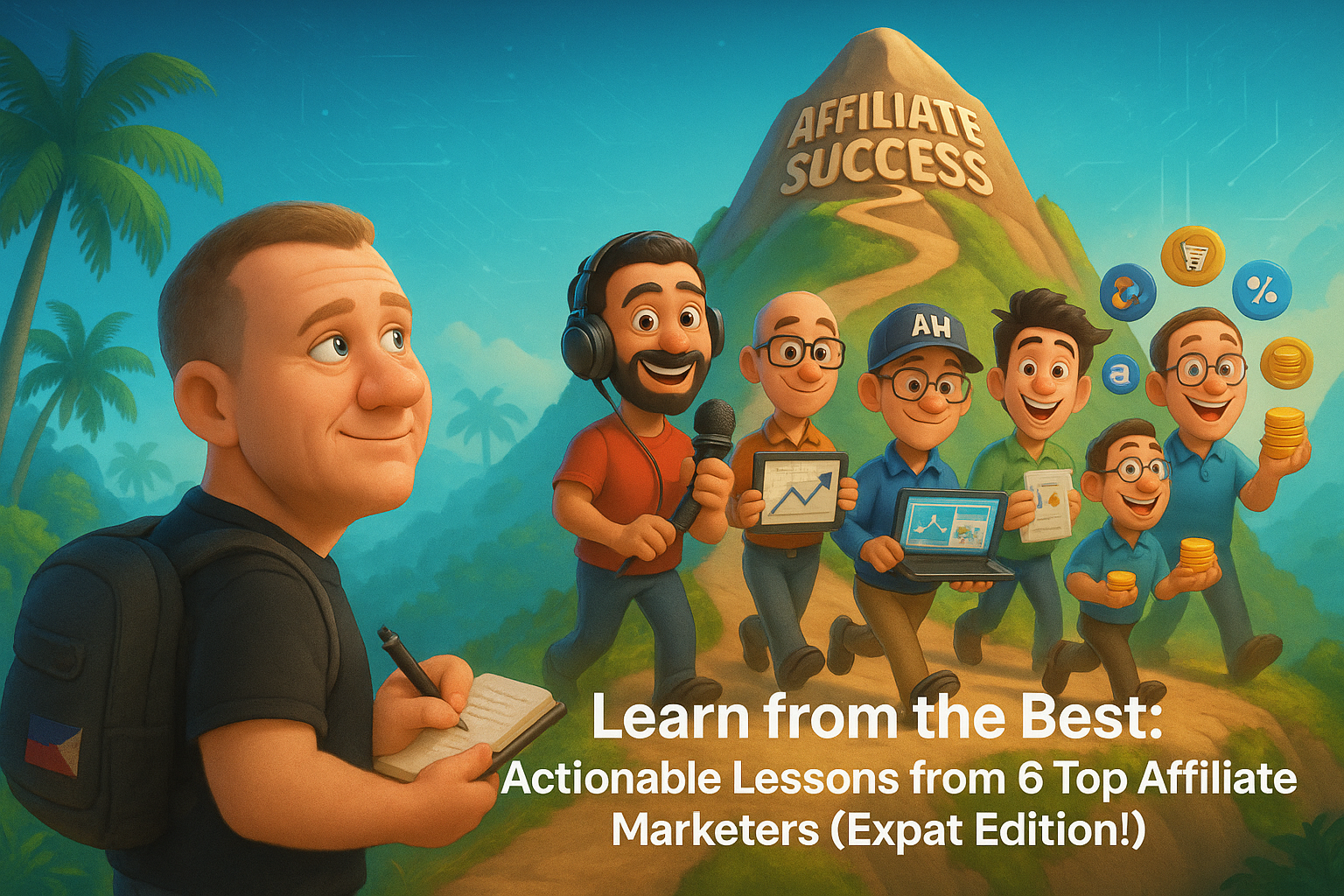

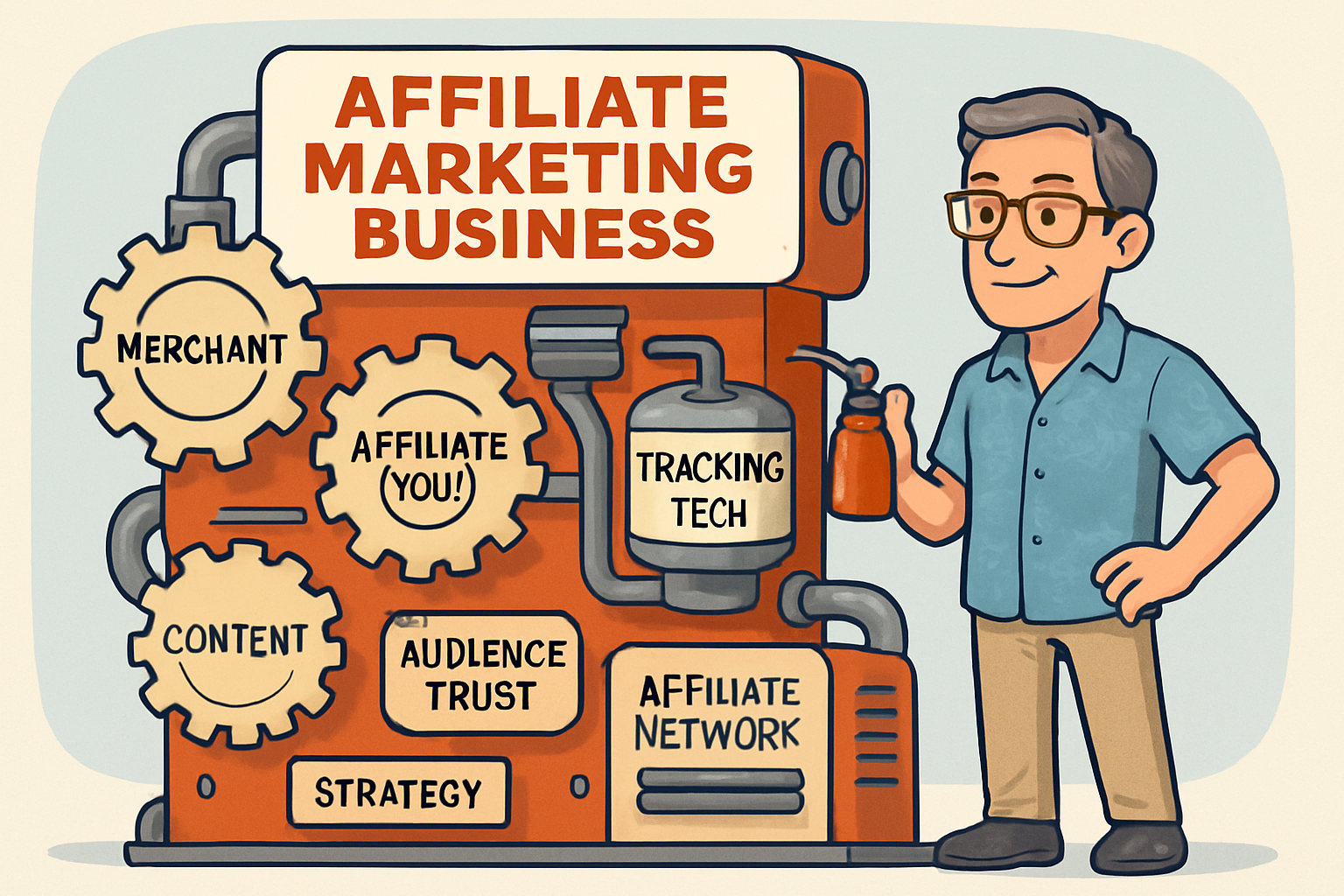





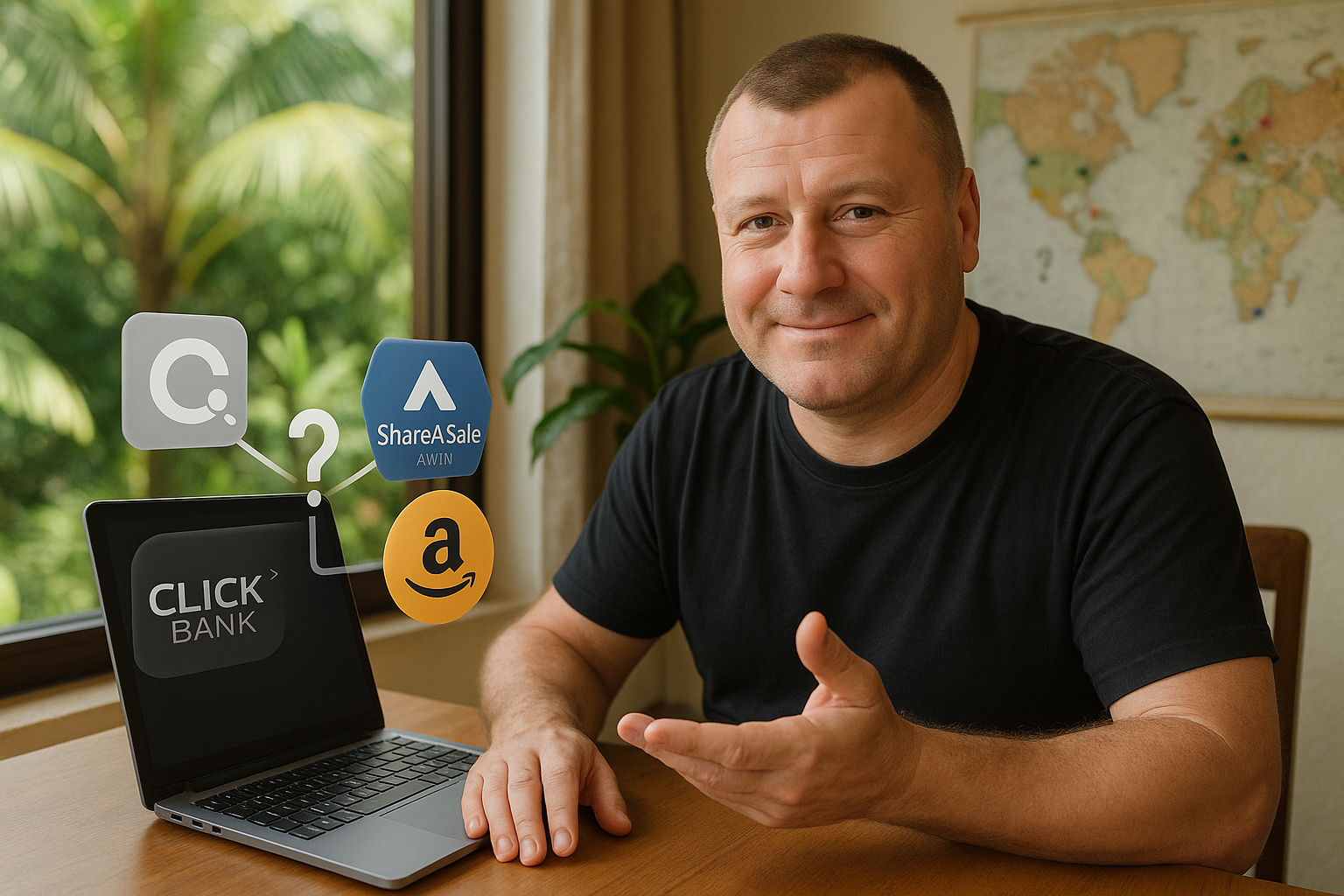
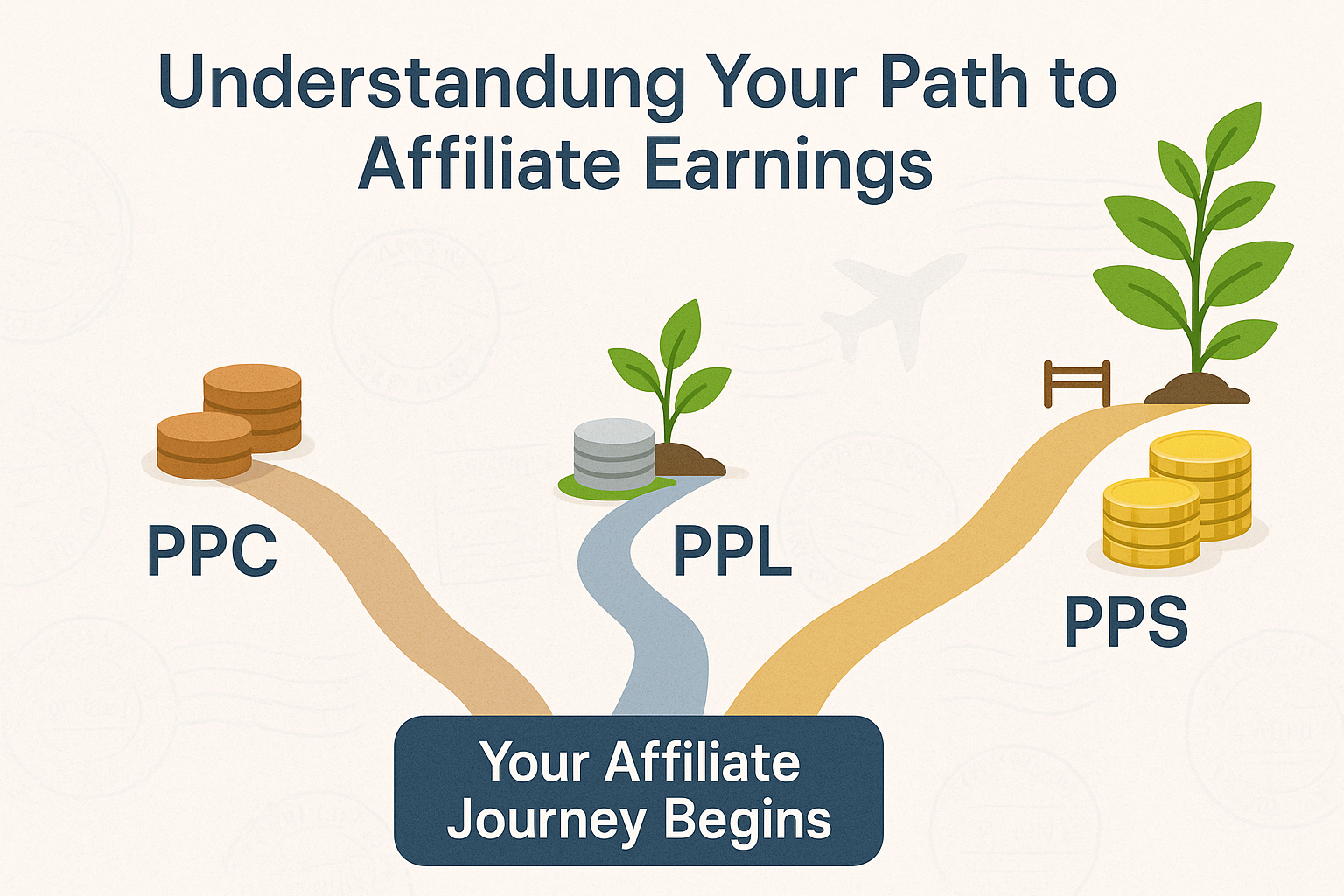
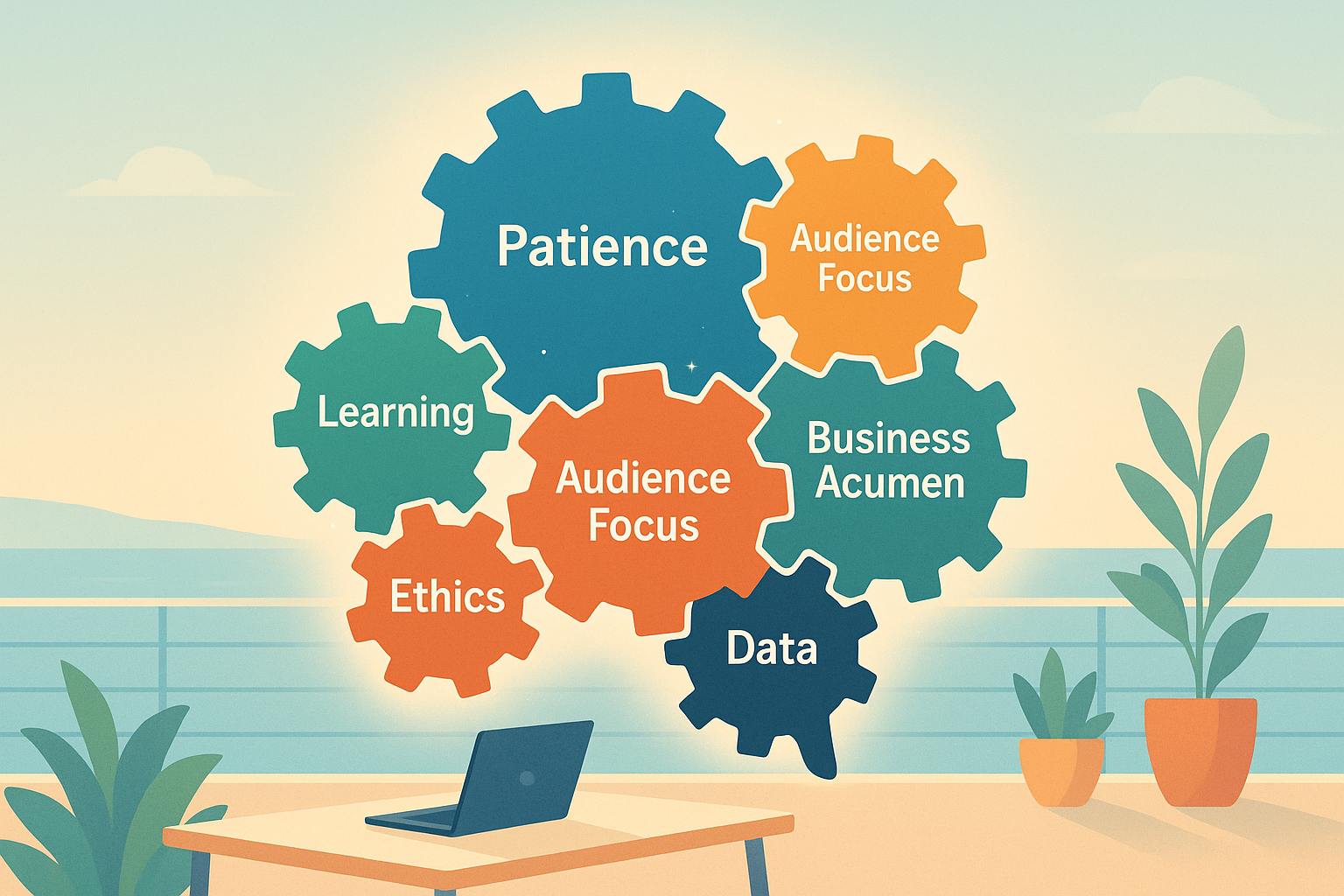
Leave a Reply